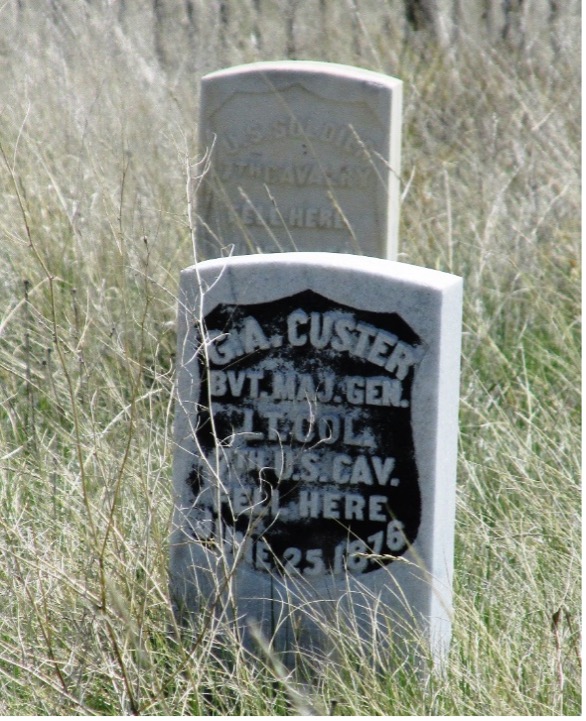
“My every thought was ambition—to be great.”
—George Armstrong Custer
What a sight it would have been to see the Indian encampment on the morning of June 25, 1876. It was a hot, hot day. Children were playing in the cool waters known to the Indians as the Greasy Grass River. A herd of ponies too large to count grazed in the valley, west of the river, where an estimated 7,000 Lakota, Cheyenne, and Arapaho had come together to make their camp.
One month earlier General Custer and the 7th Cavalry had marched west from Fort Abraham Lincoln in the Dakota Territory with 1,200 men. By June 23, they were following the travois trail of what they would refer to as Sitting Bull’s camp. By the size of the path the traveling village left behind, Custer could clearly tell they were following a massive group of Indians.
“We scouts thought there were too many Indians for Custer to fight,” Crow scout White Man Runs Him later recalled. “It was the biggest Indian camp I had ever seen.”
Custer, who had been in a hurry the entire trip, now moved even faster. His greatest fear was not that the Indians would attack, but rather that they would flee. Custer wanted a battle, and he wanted it quickly; any size would do. Both the Democratic National Convention in St. Louis and the Centennial Exhibition in Philadelphia were only days away; Custer needed a victory now, so that word of his military triumph might make it back to these important events.
Knowing that his troops had been spotted, Custer hastily ordered a battalion to attack the southern end of the Indian camp. To prevent an escape, he then ordered Captain Frederick Benteen to lead three additional companies to a line of bluffs, two miles south. When these orders were given to divide his forces, Custer had still not seen the Indian village personally and did not know the full extent of its massive size.
“Hadn’t we better keep the regiment together, General?” Captain Benteen said. “If this is as big a camp as they say, we’ll need every man we have.”
“You have your orders,” General Custer replied.
Custer’s Indian scouts and his top military leaders had urged caution, citing the extraordinary size of the encampment, but Custer did not listen to those who knew more about the village’s size than he did.
To this day, it is not clear what happened to Custer and his men, as there were no military survivors. In 1890 the army erected 249 headstone markers across the battlefield to show where Custer and each of his men had fallen, 41 of them clustered together on the river’s side of what is now referred to as “Last Stand Hill.” General Custer, his brother Tom, and Lieutenant William Cooke are among them.
Years later, numerous Indians who were camped with Sitting Bull told army officers that if Custer had asked for a council, he could have led them all in without a fight. Sitting Bull himself echoed these sentiments in subsequent interviews. We will never know if this would have been possible.
There are consequences to not sharing leadership, and to not listening. General Custer met those consequences, as did all of those under his direct command.